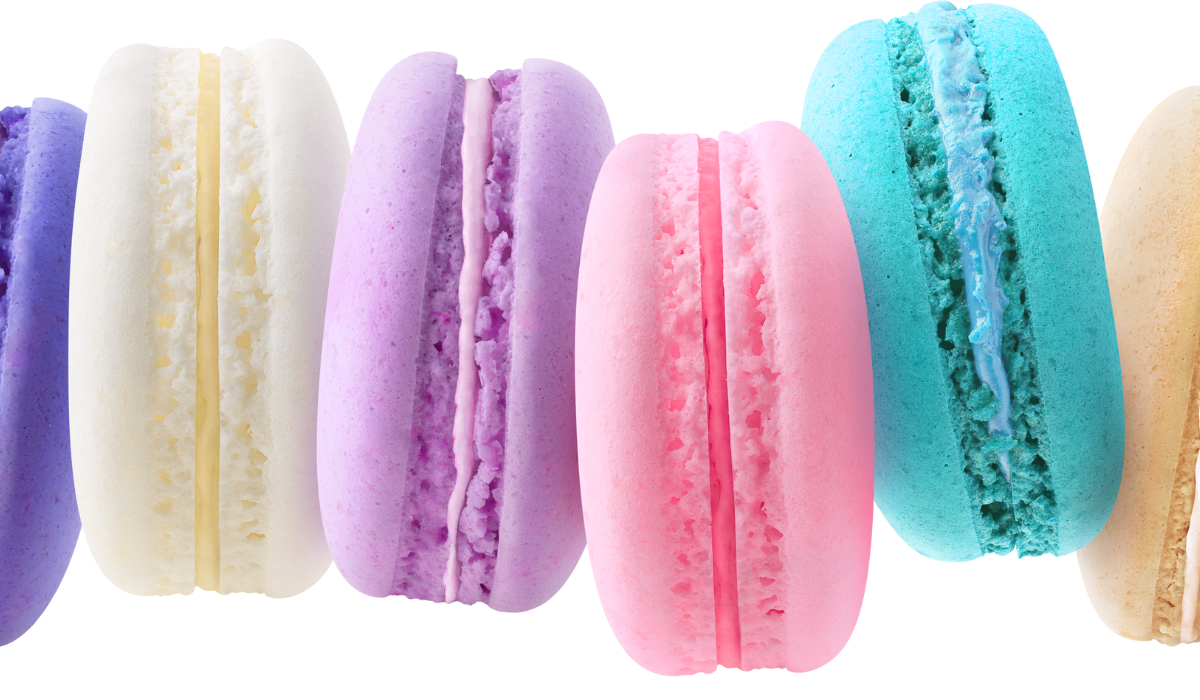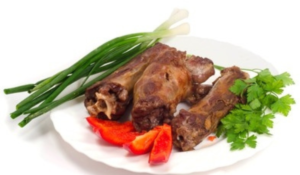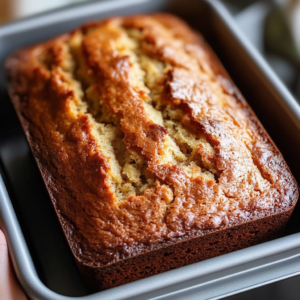Sharing is caring!
Table of Contents
ToggleIntroduction to Italian Macarons: A Taste of Authentic Elegance
Embarking on the journey of mastering the Italian macaron recipe, you’ll discover the intricate balance of texture and flavor that makes these treats so irresistible. The key lies in selecting premium ingredients like fine almond flour and the right blend of sugars, which together create the macaron’s signature smooth top and ruffled feet.
Italian macarons offer a canvas for a variety of fillings, from classic ganache to inventive fruit jams, allowing bakers to explore a world of flavors. Whether you’re a seasoned baker or a curious newbie, the art of crafting these macarons is both an enjoyable challenge and a rewarding experience.
As we delve deeper into the Italian macaron recipe, we uncover not just the steps of making these elegant desserts but also the cultural richness they embody. Each bite of an Italian macaron is a celebration of culinary craftsmanship, a testament to the timeless allure of Italian baking traditions. Let’s embark on this sweet journey together, discovering the secrets behind making the perfect Italian macaron.
History of Italian Macarons: A Sweet Legacy
The story of the Italian macaron recipe begins in Italy’s quaint monasteries during the Renaissance. These simple almond cookies, originally called ‘maccherone’, captured the essence of Italian baking with their straightforward blend of almond paste, sugar, and egg whites. As they journeyed from Italy to France, these delightful treats evolved, absorbing local flavors and techniques.
Italian chefs and bakers played a pivotal role in refining the recipe, transforming these humble almond cookies into the sophisticated macarons we relish today. The pivotal moment in their history was the introduction of the Italian meringue method. This technique, where hot sugar syrup is whipped into egg whites, set Italian macarons apart, giving them a smoother texture and a more robust structure than their French counterparts.
Over time, the Italian macaron recipe became a canvas for culinary creativity. Bakers experimented with various fillings, ranging from rich chocolate ganache to zesty lemon curd, making each macaron a unique gustatory experience. This versatility and the delicate balance of flavors and textures propelled Italian macarons to international fame, making them a staple in high-end patisseries and a favorite among dessert aficionados.
Today, the Italian macaron recipe represents a perfect blend of tradition and innovation. It’s a testament to Italy’s enduring influence on global cuisine and a beloved heritage that continues to inspire bakers around the world. As we savor each bite of these elegant confections, we’re not just enjoying a dessert; we’re partaking in a rich history that spans centuries and crosses borders, a history that’s as flavorful and fascinating as the macarons themselves.
Differences Between Italian and French Macarons: A Tale of Two Recipes
Delving into the world of macarons, one quickly encounters the distinct paths of the Italian macaron recipe and its French counterpart. While both varieties share a base of almond flour, sugar, and egg whites, their preparation methods and resulting textures set them apart in the realm of gourmet desserts.
The Italian macaron recipe hinges on the Italian meringue technique, where hot sugar syrup is whisked into beaten egg whites. This process creates a more stable and firmer batter, leading to macarons with a glossy finish and a chewy interior. Italian macarons are known for their resilience, making them a favorite among bakers who appreciate consistency and durability in their creations.
In contrast, French macarons employ the French meringue method, which involves gently folding granulated sugar into whipped egg whites. This approach results in a lighter and more delicate batter, giving French macarons their characteristic airy texture and softer shell. The French method is often considered more finicky, requiring precise technique and environmental conditions to achieve the perfect rise and the trademark ‘feet’ of the macaron.
Another notable difference lies in the aesthetic and flavor profiles. Italian macarons typically offer a bolder taste and a slightly denser texture, making them ideal for holding rich fillings like buttercreams and ganaches. French macarons, with their subtler flavor and fragile structure, often feature lighter fillings like jams and mousses.
In summary, while both the Italian and French macaron recipes create exquisite confections, their divergent techniques and textures cater to different palates and baking preferences. Whether one prefers the glossy, chewy delight of the Italian macaron or the airy, delicate charm of the French version, both styles continue to enchant dessert lovers around the globe.
Essential Ingredients for Italian Macarons: Crafting the Perfect Confection
The Italian macaron recipe, renowned for its elegant simplicity and exquisite taste, hinges on a handful of key ingredients. Each component plays a crucial role in creating the signature texture and flavor of these beloved treats. Understanding and selecting the right ingredients is the first step to macaron mastery.
- Almond Flour: The heart of any macaron, almond flour provides the nutty base and delicate texture. For Italian macarons, opt for finely ground, blanched almond flour for a smooth, lump-free batter.
- Powdered Sugar: This fine sugar not only sweetens the macarons but also helps achieve the perfect consistency when combined with almond flour.
- Granulated Sugar: The cornerstone of the Italian meringue, granulated sugar, when boiled and mixed with egg whites, gives Italian macarons their distinctive glossy and firm exterior.
- Egg Whites: Fresh egg whites are crucial for creating a stable meringue. The quality of egg whites can significantly affect the macarons’ rise and texture.
- Water: Used in the sugar syrup for the Italian meringue, water must be measured accurately to ensure the correct consistency.
- Flavorings and Colorings: Pure extracts, natural flavorings, and food colorings are used to add a personal touch to the macarons, allowing bakers to experiment with various tastes and hues.
- Filling: Typically, Italian macarons feature rich fillings like buttercream, ganache, or jam. The filling not only complements the flavors of the macaron shells but also adds to their overall appeal.
In summary, crafting Italian macarons requires precision and care in selecting and using these essential ingredients. The right balance and quality of almond flour, sugars, egg whites, and flavorings are what make the Italian macaron recipe a culinary art, resulting in confections that are as delightful to the palate as they are to the eye.
Selecting the Best Almond Flour for Macarons: A Key Step in Perfecting the Italian Macaron Recipe
Almond flour stands as a cornerstone in the Italian macaron recipe, dictating the texture and flavor of these delicate confections. Choosing the right almond flour is crucial for achieving the smooth, refined finish that Italian macarons are known for. Here’s how to select the best almond flour for your macaron endeavors:
- Go for Finely Ground Flour: The fineness of almond flour greatly impacts the texture of your macarons. A finely ground almond flour ensures a smooth, lump-free batter, leading to macarons with a professional, polished look.
- Opt for Blanched Almond Flour: Blanched almond flour, made from almonds with their skins removed, is ideal for Italian macarons. It offers a lighter color and a more delicate flavor compared to unblanched almond flour, which can impart a more rustic appearance and a slightly different taste.
- Check for Freshness: Fresh almond flour is key to avoiding rancid or stale flavors in your macarons. Always check the expiration date and store your almond flour in a cool, dry place, or even in the refrigerator to extend its shelf life.
- Consistency is Key: Ensure that the almond flour is consistently fine without any large chunks or grains. If necessary, sift the flour before use to remove any lumps, as these can affect the smooth surface of your macarons.
- Consider Homemade Options: For bakers seeking a more hands-on approach, making your own almond flour allows for complete control over fineness and freshness. Simply grind blanched almonds in a food processor until fine, taking care not to over-process into almond butter.
In conclusion, the choice of almond flour plays a pivotal role in the success of the Italian macaron recipe. Whether store-bought or homemade, focusing on the fineness, freshness, and quality of almond flour can elevate your macaron baking from delightful to divine.
Sugar Types and Their Roles in Macaron Making: Sweetening the Italian Macaron Recipe
In crafting the perfect Italian macaron recipe, understanding the roles of different sugar types is essential. Sugar in macarons isn’t just a sweetener; it’s a vital component that influences texture, stability, and appearance. Here’s a breakdown of the sugar types used in Italian macarons and their specific functions:
- Powdered Sugar: Integral to the macaron batter, powdered sugar combines with almond flour to form the base. Its fine texture ensures a smooth and uniform mixture, contributing to the delicate structure of the macaron shells. Powdered sugar also helps to stabilize the batter, giving the macarons their characteristic shape and texture.
- Granulated Sugar: The star in making Italian meringue, granulated sugar mixes with water to create a syrup. When this hot syrup is gradually added to beaten egg whites, it forms a glossy, stable meringue. This meringue is key to the Italian macaron recipe, as it gives the macarons their firm and shiny exterior. The stability provided by this method is particularly helpful in ensuring consistent results, especially in humid conditions.
- Caster Sugar: Sometimes used in place of granulated sugar, caster sugar, with its finer crystals, dissolves more easily. This can be beneficial when making the meringue, ensuring a smoother and more homogenous mixture.
Each type of sugar plays a distinct and crucial role in macaron making. Powdered sugar works in harmony with almond flour to create the base, while granulated or caster sugar is vital in forming the Italian meringue. Mastering the use of these sugars is a key step towards perfecting the Italian macaron recipe, leading to macarons that are not only sweet and flavorful but also beautifully textured and consistently delightful.
Egg Whites: Fresh vs. Aged for the Perfect Meringue in the Italian Macaron Recipe
When it comes to crafting the Italian macaron recipe, the choice between fresh and aged egg whites can significantly impact the quality of your meringue. Both types have their unique characteristics that influence the texture and stability of the macarons.
- Fresh Egg Whites: Using fresh egg whites in macarons can lead to a more robust and stable meringue, especially crucial for the Italian method. Fresh whites typically have a thicker consistency, which can produce a firmer meringue with more body. This is particularly beneficial for Italian macarons, as the meringue needs to hold up against the incorporation of hot sugar syrup.
- Aged Egg Whites: Aged egg whites, which are egg whites left to sit at room temperature for a day or two, have less elasticity and can be whipped to a higher volume. This can be advantageous for achieving a lighter, more delicate meringue. Aged egg whites are often used in French macaron recipes but can also be incorporated into Italian macarons for a slightly different texture.
- Hydration Factor: The aging process allows some of the water content in the egg whites to evaporate, reducing their moisture level. In the context of the Italian macaron recipe, this can lead to a more controlled meringue, potentially making it easier to achieve the desired consistency.
Ultimately, the choice between fresh and aged egg whites in the Italian macaron recipe depends on your desired outcome. Fresh egg whites offer stability and firmness, ideal for the rigors of the Italian meringue method, while aged egg whites can lend a lighter texture to the final product. Experimenting with both can help you find the perfect balance for your macarons, leading to a delightful and satisfying baking experience.
Step-by-Step Guide: Preparing the Italian Meringue for the Italian Macaron Recipe
Creating the perfect Italian meringue is a critical step in the Italian macaron recipe. This process involves carefully combining hot sugar syrup with whipped egg whites to achieve a glossy, stable meringue. Here’s a step-by-step guide to mastering the Italian meringue:
- Prepare Your Ingredients: Measure out granulated sugar and egg whites accurately. The precision in proportions is key to a successful meringue.
- Start the Sugar Syrup: In a saucepan, combine granulated sugar and a small amount of water. Heat this mixture over medium heat, letting the sugar dissolve completely. Use a candy thermometer to monitor the temperature.
- Whip the Egg Whites: While the sugar syrup is heating, start whipping the egg whites in a clean, grease-free bowl. Whip until they form soft peaks. This provides a foundation for incorporating the syrup.
- Monitor Syrup Temperature: When the sugar syrup reaches about 240°F (115°C), it’s at the soft-ball stage, ideal for Italian meringue.
- Combine Syrup and Egg Whites: With the mixer running, carefully pour the hot sugar syrup into the whipped egg whites in a slow, steady stream. Avoid pouring the syrup onto the whisk to prevent splattering.
- Whip to Stiff Peaks: Continue whipping the mixture until it forms stiff, glossy peaks. This can take several minutes. The meringue should be cool to the touch.
- Check the Consistency: The final meringue should be thick, glossy, and hold its shape well. This consistency is crucial for the stability of your Italian macarons.
- Use Immediately: Once your Italian meringue is ready, use it immediately to proceed with the macaron batter. Delaying can cause the meringue to lose its structure.
Mastering the Italian meringue is a skill that elevates your Italian macaron recipe. With practice, you’ll develop a feel for the right texture and consistency, leading to flawless macarons every time.
Sifting and Mixing: The Key to Smooth Batter in the Italian Macaron Recipe
Achieving a smooth batter is crucial in the Italian macaron recipe, and it all starts with proper sifting and mixing. This process ensures an even distribution of ingredients and eliminates any lumps, resulting in the signature smooth, refined texture of Italian macarons. Here’s how to master the art of sifting and mixing for the perfect batter:
- Begin with Sifting: Start by sifting your almond flour and powdered sugar together. This not only removes any lumps but also aerates the ingredients, contributing to a lighter batter. Sifting is a must to avoid grainy or lumpy macaron shells.
- Combine Dry Ingredients: After sifting, gently whisk the almond flour and powdered sugar together to ensure they are thoroughly combined. Uniformity in your dry mix is key to a consistent batter.
- Prepare the Meringue: Make your Italian meringue as per the recipe, ensuring it reaches stiff, glossy peaks. This meringue forms the base of your macaron batter and adds stability.
- Fold in the Dry Mix: Add the sifted dry ingredients to the meringue in stages, gently folding them in with a spatula. The goal here is to incorporate the dry mix without deflating the meringue. Be gentle and patient during this step.
- Achieve the Right Consistency: Continue folding until the batter flows like lava, forming a thick ribbon when lifted with the spatula. This is the ‘macaronage’ stage, and getting it right is crucial. Over-mixing can lead to flat macarons, while under-mixing can cause lumpy shells.
- Test the Batter: Before piping, do a test with a small amount of batter. It should slowly spread out and the peak should settle back into the batter. If it holds its shape, gently fold a few more times.
Sifting and mixing play a pivotal role in the Italian macaron recipe. By perfecting these steps, you ensure a smooth, homogenous batter that bakes into beautifully smooth and shiny macarons, every time.
Mastering the Macaronage Technique in the Italian Macaron Recipe
The macaronage technique is a critical step in the Italian macaron recipe, where skillful folding of the batter determines the texture and appearance of the final product. Mastering this technique is essential for creating smooth, well-risen macarons with the characteristic “feet”. Here’s how to perfect the macaronage process:
- Combine Meringue and Dry Ingredients: Start by gently folding your Italian meringue into the sifted mixture of almond flour and powdered sugar. The goal is to incorporate them fully without deflating the meringue.
- Fold with Precision: Use a spatula to cut through the mixture, then sweep it along the sides and fold it over. Turn the bowl slightly with each fold. This method helps mix the ingredients evenly while maintaining the batter’s airy texture.
- Check the Consistency: The batter should flow smoothly and steadily off the spatula, like lava. When you lift the spatula, the batter should fall in a ribbon and smoothly integrate back into the rest of the batter within about 30 seconds.
- Avoid Over-Mixing: Over-mixing can make the batter too runny, leading to flat, spread-out macarons. Stop folding once you reach the right consistency.
- Practice Makes Perfect: Macaronage is a technique that benefits from practice. Each batch will help you develop a better feel for when the batter is just right.
- Test a Small Amount: Before piping the entire batch, test a small amount of batter on your baking sheet. It should spread slightly and then hold its shape, with the peak settling down smoothly.
Mastering the macaronage technique is crucial in the Italian macaron recipe. It ensures that your macarons have a smooth top, a ruffled foot, and just the right balance between chewy and soft. With patience and practice, you’ll soon be creating impeccable Italian macarons every time.
Piping Perfect Macarons: Tips and Tricks for the Italian Macaron Recipe
Piping is a pivotal stage in crafting the Italian macaron recipe, where precision and technique come together to shape your delightful treats. Perfectly piped macarons are uniform in size and shape, crucial for their final appearance and texture. Here are essential tips and tricks to pipe like a pro:
- Prepare the Piping Bag: Fit a piping bag with a round tip, ideally about 1/2 inch in diameter. This size allows for good control and consistency. Fill the bag with your macaron batter, but don’t overfill it to avoid spillage and uneven pressure.
- Hold the Bag Upright: Position the piping bag vertically over your baking sheet lined with parchment paper or a silicone mat. This stance ensures even and symmetrical macarons.
- Pipe with Consistency: Squeeze the bag gently and let the batter form a round shape on the sheet. Aim for about 1 to 1.5 inches in diameter. Be consistent in size for even baking.
- Release and Lift Carefully: Once you’ve piped a macaron, stop squeezing and lift the bag straight up with a quick twist. This helps avoid peaks on the macaron tops.
- Tap Out Air Bubbles: After piping, gently tap the baking sheet against your counter. This action releases any trapped air bubbles, preventing cracks and ensuring a smooth surface.
- Let Them Rest: Allow the piped macarons to rest at room temperature until they form a skin. This step is key for developing the characteristic feet of macarons during baking.
- Practice Patience: Piping takes practice. Don’t get discouraged by initial imperfections. Each batch will improve your skill.
Piping perfect macarons is an art that elevates the Italian macaron recipe. By following these tips and practicing regularly, you’ll soon achieve beautifully shaped macarons that are as pleasing to the eye as they are to the palate.
Filling Flavors: Classic and Innovative Ideas for the Italian Macaron Recipe
The filling of an Italian macaron not only complements its delicate shell but also offers an opportunity to infuse creativity and personal flair into the recipe. Here are some classic and innovative filling ideas to elevate your Italian macaron recipe:
- Classic Ganache: A rich, creamy chocolate ganache is a timeless choice. Dark, milk, or white chocolate mixed with heavy cream creates a smooth, luxurious filling that pairs beautifully with any macaron shell.
- Buttercream Bliss: Silky buttercream offers endless flavor possibilities. Vanilla, almond, and espresso are popular options. For a twist, infuse your buttercream with citrus zest or herbs for a unique flavor profile.
- Fruitful Fillings: Fresh or preserved fruits can add a tart contrast to the sweet macaron shells. Raspberry jam, lemon curd, or passionfruit paste are delightful choices that add a burst of freshness.
- Salted Caramel: For a balance of sweet and salty, a salted caramel filling is irresistible. Its gooey, rich texture and deep flavor add a sophisticated touch to your macarons.
- Nutty Notes: Nut-based fillings like pistachio cream or hazelnut spread offer a delightful crunch and richness, complementing the almond flavor of the macaron shells.
- Cheese Please: For a savory twist, consider a cream cheese-based filling. It pairs well with fruit-flavored shells, offering a cheesecake-like experience.
- Innovative Infusions: Experiment with unique combinations like matcha, lavender, or earl grey tea infused into your fillings. These offer an elegant and unexpected twist to the traditional macaron.
In the world of Italian macarons, the filling is where you can truly showcase your culinary creativity. Whether sticking to classic flavors or exploring innovative combinations, the right filling can turn your Italian macaron recipe into an unforgettable treat.
Pairing Macarons with Beverages: Enhancing the Italian Macaron Recipe Experience
Enjoying Italian macarons with the right beverage can elevate the overall tasting experience. The key is to complement the delicate flavors of the macarons without overpowering them. Here are some delightful pairing suggestions to enhance your Italian macaron recipe indulgence:
- Classic Coffee: A freshly brewed cup of coffee is a timeless companion to Italian macarons. The robust flavor of espresso or a latte can beautifully offset the sweetness of the macarons, making for a balanced taste experience.
- Tea Time: Pairing macarons with tea offers a world of possibilities. A light, floral tea like Earl Grey or Jasmine can complement the delicate nature of macarons, while a stronger black tea can provide a contrasting backdrop to their sweetness.
- Sparkling Wine: For a touch of elegance, pair your macarons with a glass of sparkling wine or champagne. The effervescence and slight acidity of these beverages can cut through the richness of the macarons, creating a harmonious balance.
- Dessert Wines: Sweet dessert wines like Moscato or a late-harvest Riesling can echo the sweetness of the macarons, enhancing their flavor profiles. This pairing works exceptionally well with fruit-filled or chocolate macarons.
- Milk: For a comforting and classic pairing, enjoy your Italian macarons with a glass of cold milk. This combination is particularly appealing if you’re enjoying chocolate or nut-flavored macarons.
- Fruity Cocktails: A light, fruity cocktail can be a refreshing counterpart to the rich flavors of the macarons. Consider a cocktail with citrus or berry notes to complement fruit-flavored macarons.
When pairing beverages with Italian macarons, consider the flavor profile of the macarons and choose a drink that either complements or thoughtfully contrasts with them. The right pairing can turn your Italian macaron recipe into a truly gourmet experience.
Decorative Ideas for Italian Macarons: Adding Flair to Your Italian Macaron Recipe
Enhancing your Italian macaron recipe with creative decorations not only makes them visually appealing but also adds a personal touch to these elegant treats. Here are some ideas to beautifully adorn your Italian macarons:
- Edible Gold Leaf: For a touch of luxury, apply small pieces of edible gold leaf on top of the macarons. This adds a sophisticated and festive look, perfect for special occasions.
- Lustre Dust: Brushing a bit of lustre dust on your macarons can give them a shimmering, iridescent finish. This works exceptionally well for pastel-colored macarons, adding depth and elegance.
- Chocolate Drizzle: Melted chocolate, whether dark, milk, or white, can be drizzled over the macarons for a classic decoration. This not only looks appealing but also adds an extra layer of flavor.
- Sprinkles and Toppings: Customize your macarons with various sprinkles, crushed nuts, or even small fruit pieces. Match these toppings to the flavor of the filling for a cohesive and delicious design.
- Piped Details: Using a fine piping tip, add intricate designs or monograms with royal icing. This allows for detailed personalization, whether it’s simple dots, swirls, or more elaborate patterns.
- Floral Accents: Edible flowers or candied petals can add a natural and delicate touch to your macarons. This is particularly beautiful for spring and summer gatherings.
- Theme Matching: Tailor your decorations to match the theme of your event. For instance, use seasonal colors for holidays or specific color schemes for weddings or parties.
Decorating your Italian macarons is a fun and creative way to enhance their appearance and appeal. Whether you go for simple elegance with a dusting of lustre or a more elaborate design with chocolate and sprinkles, these decorative touches can transform your Italian macaron recipe into a visual and culinary delight.
Health and Nutrition: Understanding the Sweet Treat of the Italian Macaron Recipe
While indulging in the delightful world of Italian macarons, it’s important to understand their health and nutritional aspects. This understanding helps you enjoy these treats mindfully, balancing pleasure with health. Here’s a brief overview of the health and nutrition of the Italian macaron recipe:
- Calorie Content: Italian macarons are primarily made of almond flour, sugar, and egg whites, contributing to their calorie content. Typically, a single macaron can contain around 70 to 100 calories, depending on the size and filling.
- Sugar Levels: As a dessert, macarons have a high sugar content. While they offer a burst of energy, it’s wise to consume them in moderation, especially for those monitoring their sugar intake.
- Gluten-Free: Almond flour is naturally gluten-free, making Italian macarons a suitable option for those with gluten sensitivities or celiac disease. However, always check for cross-contamination if this is a concern.
- Protein Source: The egg whites in macarons provide a small amount of high-quality protein, contributing to their nutritional value.
- Almond Benefits: Almond flour is rich in vitamins, minerals, and healthy fats. It provides vitamin E, magnesium, and heart-healthy monounsaturated fats, offering more nutritional benefits compared to traditional flour.
- Mindful Indulgence: While Italian macarons are not a health food, they can be enjoyed as part of a balanced diet. Savoring them as an occasional treat allows you to indulge mindfully.
- Portion Control: Due to their small size, macarons can help with portion control, allowing you to satisfy your sweet tooth without overindulging.
In summary, while the Italian macaron recipe yields a sweet and delightful treat, being aware of its health and nutritional aspects helps you enjoy these delicacies in a balanced and mindful way. Remember, moderation is key to enjoying the sweet pleasures of life, including the irresistible Italian macaron.
Celebrating Occasions with Italian Macarons: Adding Elegance with the Italian Macaron Recipe
Italian macarons, with their exquisite appearance and delectable flavors, make a perfect addition to any celebration. Incorporating the Italian macaron recipe into special events adds a touch of elegance and sophistication. Here’s how to make these delightful treats a part of your memorable occasions:
- Weddings: Customize macarons to match the wedding theme. Choose colors and flavors that complement the decor, and consider using them as elegant wedding favors or as part of the dessert table.
- Birthdays: Brighten up birthday celebrations with a variety of macaron colors and flavors. Create a macaron tower or arrange them beautifully on a platter for an eye-catching dessert.
- Holiday Gatherings: Tailor your Italian macaron recipe to fit holiday themes. Use festive colors for Christmas, spooky designs for Halloween, or pastel shades for Easter. Flavor them with seasonal ingredients to enhance the festive spirit.
- Baby Showers: Soft pastel-colored macarons are perfect for baby showers. Choose flavors and colors that align with the theme of the shower, adding a sweet touch to this special occasion.
- Corporate Events: Impress clients and colleagues with a sophisticated array of Italian macarons. Opt for classic, elegant designs and flavors that appeal to a wide audience.
- Tea Parties: Pair Italian macarons with a selection of teas for an elegant afternoon tea party. Their delicate nature and variety of flavors make them ideal companions to different tea blends.
- Anniversaries: Celebrate milestones with a special batch of Italian macarons. Personalize them with dates, initials, or colors that hold significance to the celebrated couple.
Italian macarons bring a sense of luxury and joy to any event. By adapting the Italian macaron recipe to fit the theme and preference of your occasion, you transform these delightful confections into a celebration of taste and style.
Advanced Techniques for Seasoned Bakers in the Italian Macaron Recipe
For seasoned bakers looking to elevate their Italian macaron recipe, mastering advanced techniques can transform these elegant confections into true culinary artworks. Here are some sophisticated methods to enhance your macaron-making skills:
- Multi-Flavored Shells: Experiment with creating macaron shells that feature two or more flavors. This can involve careful batter partitioning and flavor blending, demanding precision and skill for a harmonious outcome.
- Intricate Piping Designs: Move beyond simple rounds and try intricate shapes and patterns. This could include hearts, flowers, or themed shapes relevant to special occasions, requiring steady hands and creative vision.
- Marbling and Painting: For an artistic touch, try marbling techniques on the shells or hand-painting them post-baking. Use food-safe colors and a delicate brush to create stunning, eye-catching designs.
- Texture Experimentation: Introduce textures into your macarons by adding finely chopped nuts, citrus zest, or spices to the shell mixture. This not only adds flavor complexity but also a unique mouthfeel.
- Filling Innovations: Go beyond classic fillings and experiment with layers or dual-flavored fillings. Think of combinations like dark chocolate ganache with a raspberry center or salted caramel with a vanilla bean buttercream.
- Temperature and Humidity Control: Mastering the effects of temperature and humidity on your macarons can be game-changing. Experiment with resting times and baking temperatures to achieve the perfect feet and texture.
- Flavor Infusion: Infuse your macarons with teas, herbs, or liqueurs for an unexpected flavor twist. This involves careful balance to ensure the flavors enhance rather than overpower the delicate macaron.
- Structural Creations: Build structures like towers or wreaths with your macarons, requiring not only baking skills but also an architectural approach to ensure stability and visual appeal.
For experienced bakers, these advanced techniques in the Italian macaron recipe open up a world of creativity and challenge, pushing the boundaries of what’s possible in the realm of these beloved treats.
Italian Macaron Recipe
Ingredients:
- 1 ¾ cups powdered sugar
- 1 cup almond flour
- 3 large egg whites, at room temperature
- ¼ cup granulated sugar
- ½ teaspoon pure vanilla extract
- Pinch of salt
- Food coloring (optional)
- Filling of choice (chocolate ganache, buttercream, etc.)
Directions:
- Sift together powdered sugar and almond flour, discarding any lumps.
- In a separate bowl, beat egg whites with a mixer on medium speed until foamy. Gradually add granulated sugar, beating until stiff peaks form.
- Add vanilla extract, salt, and food coloring (if using) to the egg whites.
- Gently fold in the almond flour mixture until just combined.
- Pipe 1-inch rounds onto a parchment-lined baking sheet, tapping the sheet to release air bubbles.
- Let macarons sit at room temperature for 30-40 minutes, until they form a skin.
- Preheat oven to 300°F (150°C).
- Bake macarons for 17-20 minutes, or until they lift easily off the parchment.
- Let cool completely before filling.
Prep Time: 1 hour | Cooking Time: 20 minutes | Total Time: 1 hour 20 minutes
Kcal: 50 kcal per macaron | Servings: Makes about 20 macarons
FAQs About Italian Macaron Recipe
- What makes the Italian macaron recipe different from the French macaron recipe? The key difference lies in the meringue preparation. Italian macarons use an Italian meringue, where hot sugar syrup is whisked into beaten egg whites, resulting in a more stable batter and a shinier shell.
- Can I use regular flour instead of almond flour in the Italian macaron recipe? Almond flour is essential for the authentic texture and taste of Italian macarons. Using regular flour would significantly alter the outcome, both in flavor and structure.
- Why do my Italian macarons have no feet? This could be due to undermixing the batter, insufficient resting time before baking, or incorrect oven temperature. Ensure you follow the recipe precisely, especially during the macaronage stage.
- How long can Italian macarons be stored? Italian macarons can be stored in an airtight container in the refrigerator for up to one week. They can also be frozen for up to three months.
- Can I make Italian macarons in a humid environment? Humidity can affect macarons, but the Italian meringue method is more forgiving in humid conditions. However, it’s still important to work in a cool, dry area if possible.
- Is it necessary to age egg whites for Italian macarons? Aging egg whites is not a mandatory step for Italian macarons, but it can help reduce moisture and create a more stable meringue.
- How do I achieve vibrant colors in my Italian macarons? Use gel or powder food coloring for the best results. Add the color to the meringue for even distribution without affecting the batter’s consistency.
- Can I fill Italian macarons with any type of filling? Yes, you can be creative with fillings. Just ensure the filling isn’t too runny or heavy, as it can make the shells soggy or cause them to collapse.
Conclusion: The Art of Italian Macarons
Mastering the Italian macaron recipe is both an art and a delightful culinary adventure. From selecting the perfect almond flour to mastering the Italian meringue and the crucial macaronage technique, each step is a testament to the precision and elegance inherent in Italian baking. While challenges like achieving the right consistency or creating the perfect ‘feet’ may arise, the process is as rewarding as the outcome – delicate, beautiful macarons that are a feast for both the eyes and the palate.
Whether you’re a seasoned baker or a curious novice, the journey through the world of Italian macarons is filled with opportunities for creativity and refinement. Experimenting with different fillings, colors, and decorations allows for endless possibilities, making each batch of macarons uniquely yours.
Remember, the key to perfect Italian macarons lies in patience, practice, and passion. Embrace each step, learn from your experiences, and soon, you’ll be crafting these exquisite treats with confidence and flair. Enjoy the process, savor the results, and share the joy of your homemade Italian macarons.







1 thought on “Italian Macaron Recipe: A Guide to Perfect Macarons”
Comments are closed.